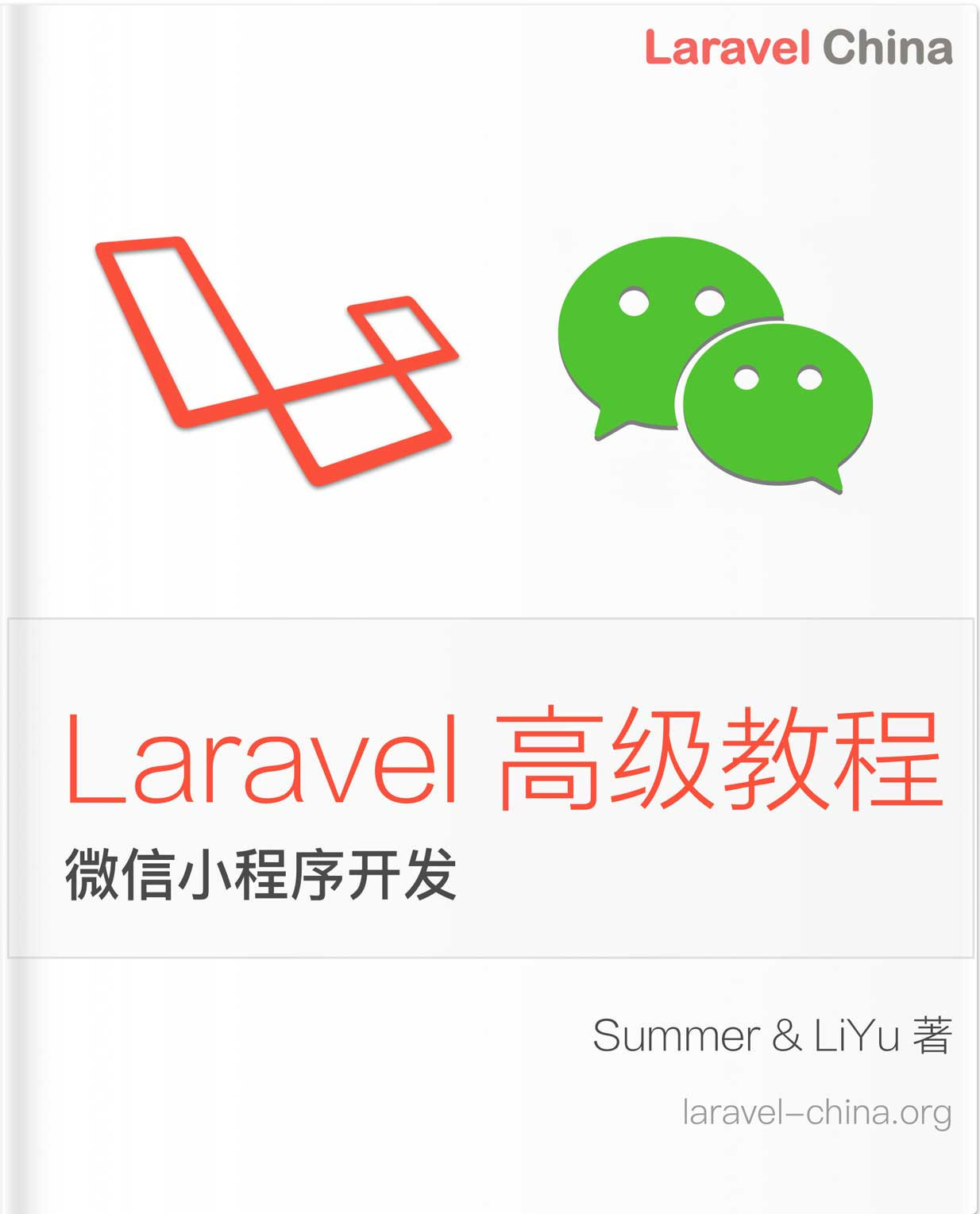记一次 Laravel 多表关联查询的出现的问题,刚开始以为是 Laravel 的 Bug,最终得到结论,原来是我读书太少!!!
再受到 @leo 的启发,又重读了ORM模型关联的文档。发现了whereHas的用法,于是改写我的昨天的代码实现,发现这才是特么优雅啊。
代码如下:
$data = Question::where('type', 1)->whereHas('labels', function ($query) {
$query->whereIn('label_id', [1, 2, 3, 4, 5, 6, 7, 8, 9]);
})->with(['labels'])->get();结果是满足我的需求的,并且其SQL是这样的:
但是发现前几次查询第一条SQL的时间消耗很高,分别是3.5、2.5等依次降低,最后平均在0.65左右。所以得出结论是,MySQL可能是在首次查询是做了相应的缓存。
测试的结果都在在这里,至于你怎么选择,得看你的了。
数据结果
array:1 [ 0 => array:10 [ "id" => 10 "title" => "Ex minus magnam sed quo modi velit. Quis ab consequatur dolor iste tempora accusamus." "type" => 1 "comment" => null "star" => 2 "creator" => 15 "deleted_at" => null "created_at" => "2017-11-20 13:57:19" "updated_at" => "2017-11-20 13:57:19" "labels" => array:2 [ 0 => array:6 [ "id" => 5 "name" => "北京化工大学" "level" => 3 "upid" => 2 "creator" => 1 "pivot" => array:2 [ "question_id" => 10 "label_id" => 5 ] ] 1 => array:6 [ "id" => 30 "name" => "第九章" "level" => 3 "upid" => 21 "creator" => 1 "pivot" => array:2 [ "question_id" => 10 "label_id" => 30 ] ] ] ] ]第1次的SQL打印
array:2 [ 0 => array:3 [ "query" => "select * from `questions` where `type` = ? and exists (select * from `labels` inner join `question_labels` on `labels`.`id` = `question_labels`.`label_id` where `questions`.`id` = `question_labels`.`question_id` and `question_labels`.`label_id` in (?, ?, ?, ?, ?, ?, ?, ?, ?)) and `questions`.`deleted_at` is null" "bindings" => array:10 [ 0 => 1 1 => 1 2 => 2 3 => 3 4 => 4 5 => 5 6 => 6 7 => 7 8 => 8 9 => 9 ] "time" => 3.35 ] 1 => array:3 [ "query" => "select `labels`.*, `question_labels`.`question_id` as `pivot_question_id`, `question_labels`.`label_id` as `pivot_label_id` from `labels` inner join `question_labels` on `labels`.`id` = `question_labels`.`label_id` where `question_labels`.`question_id` in (?)" "bindings" => array:1 [ 0 => 10 ] "time" => 0.39 ] ]当进行N次之后,打印SQL语句时,发现
time时间0.64,可能是由于MySQL做了数据缓存(至于其中缘由不得而知)。array:2 [ 0 => array:3 [ "query" => "select * from `questions` where `type` = ? and exists (select * from `labels` inner join `question_labels` on `labels`.`id` = `question_labels`.`label_id` where `questions`.`id` = `question_labels`.`question_id` and `question_labels`.`label_id` in (?, ?, ?, ?, ?, ?, ?, ?, ?)) and `questions`.`deleted_at` is null" "bindings" => array:10 [ 0 => 1 1 => 1 2 => 2 3 => 3 4 => 4 5 => 5 6 => 6 7 => 7 8 => 8 9 => 9 ] "time" => 0.64 ] 1 => array:3 [ "query" => "select `labels`.*, `question_labels`.`question_id` as `pivot_question_id`, `question_labels`.`label_id` as `pivot_label_id` from `labels` inner join `question_labels` on `labels`.`id` = `question_labels`.`label_id` where `question_labels`.`question_id` in (?)" "bindings" => array:1 [ 0 => 10 ] "time" => 0.32 ] ]-------华丽分割线 2017年11月21日8点更新
背景
因为在做一个考试系统,涉及到题目的搜索。当在做到题目搜索时,有这样的需求。查询一个题目的类型,同时查询标签属性,获取到二者的交集。
题目标签有多个所以设计了题目与标签的关联表question_labels,因为一个题目只能是一种类型,所以他在原始表中questions。
而这时就遇到了多表联查,发现了一个问题,不过最后了解了其原理后,最终还是解决了这个问题。
(其实用DB多表联查可以很快解决这个问题)
所以,本着为后来人做一个先例的态度,写下了此篇文章。
遇到的问题
当使用
with('labels', function ($query) {
$query->whereIn('question_labels.label_id', [1,2,3,4,5,6,7,8,9]);
})这个查询的时候,得到了结果与我预想的不太一样,它取到的结果不是交集,而是基于Question的附加了关联关系的集合。也就是,不符合whereIn('question_labels.label_id', [1,2,3,4,5,6,7,8,9])这个条件的数据依然还是存在。
先说结论
with的意义是,在主数据的结果集下,再查询其附属关系,并将其附加到主数据结果集上,所以刚刚的查询结果是正确的。
那么whereIn('question_labels.label_id', [1,2,3,4,5,6,7,8,9])这个条件有什么意义呢?查询符合条件属性并附加到原数据集合上。
所以,笔者这时得出的最终解决方式是
先进行联合查询获取结果,然后再依据结果集读取关联关系。
附上代码$data = Question::where('type', 1) select('questions.*') ->leftJoin('question_labels', 'questions.id', '=', 'question_labels.question_id') ->whereIn('question_labels.label_id', [1,2,3,4,5,6,7,8,9,10,11,12,13]) ->with(['options']) ->get();效率问题,第一次关联查询不可避免。第二次Laravel会使用
whereIn加载关联关系,whereIn条件是ID,所以命中主键索引效率是最高的。

项目介绍
- 表设计
- 题目表
questions
- 题目表
| 字段 | 含义 |
|---|---|
| id | 主键 |
| title | 题目内容 |
| type | 类型:1为单选,2为多选 |
- 标签表
labels
| 字段 | 含义 |
|---|---|
| id | 主键 |
| name | 标签名称 |
- 题目与标签的关联表
question_labels
| 字段 | 含义 |
|---|---|
| id | 主键 |
| question_id | 题目ID |
| label_id | 标签ID |
Laravel 中的 Model 定义
- QuestionModel(定义的关联关系)
public function labels() { return $this->belongsToMany(Label::class, 'question_labels'); }遇到问题,解决问题的过程,以及代码、截图等
1. Controller中的查询
$data = Question::where('type', 1) ->with(['labels' => function ($query) { $query->whereIn('question_labels.label_id', [1,2,3,4,5,6,7,8,9]); }])->get();查询单选题,并且属性包含1,2,3,4,5,6,7,8,9的属性题目
SQL打印
array:2 [ 0 => array:3 [ "query" => "select * from `questions` where `type` = ? and `questions`.`deleted_at` is null" "bindings" => array:1 [ 0 => 1 ] "time" => 0.56 ] 1 => array:3 [ "query" => "select `labels`.*, `question_labels`.`question_id` as `pivot_question_id`, `question_labels`.`label_id` as `pivot_label_id` from `labels` inner join `question_labels` on `labels`.`id` = `question_labels`.`label_id` where `question_labels`.`question_id` in (?, ?, ?, ?, ?, ?, ?, ?, ?, ?, ?, ?) and `question_labels`.`label_id` in (?, ?, ?, ?, ?, ?, ?, ?, ?)" "bindings" => array:21 [ 0 => 1 1 => 2 2 => 3 3 => 8 4 => 9 5 => 10 6 => 13 7 => 15 8 => 16 9 => 17 10 => 20 11 => 21 12 => 1 13 => 2 14 => 3 15 => 4 16 => 5 17 => 6 18 => 7 19 => 8 20 => 9 ] "time" => 0.49 ] ]
 and `question_labels`.`label_id` in ('1', '2', '3', '4', '5', '6', '7', '8', '9')
2. 困惑产生
这就让我产生了极大的困惑,为什么关联查询的数据是这样的呢?
3. 思绪迸发
后来我想明白了:
我的搜索时基于
Question Model的,发送的两条SQL中,
第一条SQL是查询了符合TYPE=1条件的QUESTION,LARAVEL对结果做了相应的缓存。(因为是基于QUESTION的MODEL,并且我使用了with(Relation)的语法)。
第二条Sql使用with(realtion)的语法是在给第一次的结果加载关联关系,所以这个问题就迎刃而解了。
4. 试验其他方法
可能很多人说了,你可以这样啊,先把Label关联关系查询出来:
$data = Question::labels()->whereIn('id', [1,2,3,4,5,6,7,8,9])->get();BUT IT DOESN'T WORK!(不起任何作用)
Non-static method App\\Models\\Question::labels() should not be called statically
结论label()这种方式必须要要有一个Question的查询结果集才能加载关联关系,否则即报错。
5. 再次试验
还有人说,你的反向来查?但是不起作用。因为只是将Question的结果集换了Label的结果集,显然是不可取的。
6. 所以我的解决方式是:
$data = Question::where('type', 1)
->select('questions.*')
->leftJoin('question_labels', 'questions.id', '=', 'question_labels.question_id')
->whereIn('question_labels.label_id', [1,2,3,4,5,6,7,8,9,10,11,12,13])
->with(['options', 'possessors', 'labels'])
->get();options选项、possessors拥有人、labels标签属性
7. 终于得到了想要的SQL和结果
- SQL
array:4 [ 0 => array:3 [ "query" => "select `questions`.* from `questions` left join `question_labels` on `questions`.`id` = `question_labels`.`question_id` where `type` = ? and `question_labels`.`label_id` in (?, ?, ?, ?, ?, ?, ?, ?, ?, ?, ?, ?, ?) and `questions`.`deleted_at` is null" "bindings" => array:14 [ 0 => 1 1 => 1 2 => 2 3 => 3 4 => 4 5 => 5 6 => 6 7 => 7 8 => 8 9 => 9 10 => 10 11 => 11 12 => 12 13 => 13 ] "time" => 0.52 ] 1 => array:3 [ "query" => "select * from `question_options` where `question_options`.`question_id` in (?)" "bindings" => array:1 [ 0 => 10 ] "time" => 0.32 ] 2 => array:3 [ "query" => "select * from `question_possessors` where `question_possessors`.`question_id` in (?) and `question_possessors`.`deleted_at` is null" "bindings" => array:1 [ 0 => 10 ] "time" => 0.29 ] 3 => array:3 [ "query" => "select `labels`.*, `question_labels`.`question_id` as `pivot_question_id`, `question_labels`.`label_id` as `pivot_label_id` from `labels` inner join `question_labels` on `labels`.`id` = `question_labels`.`label_id` where `question_labels`.`question_id` in (?)" "bindings" => array:1 [ 0 => 10 ] "time" => 0.38 ] ]- Response Data
array:1 [ 0 => array:12 [ "id" => 10 "title" => "Ex minus magnam sed quo modi velit. Quis ab consequatur dolor iste tempora accusamus." "type" => 1 "comment" => null "star" => 2 "creator" => 15 "deleted_at" => null "created_at" => "2017-11-20 13:57:19" "updated_at" => "2017-11-20 13:57:19" "options" => [] "possessors" => array:4 [ 0 => array:7 [ "id" => 2 "question_id" => 10 "creator" => 11 "possessor" => 20 "deleted_at" => null "created_at" => "2017-11-20 13:57:20" "updated_at" => "2017-11-20 13:57:20" ] 1 => array:7 [ "id" => 11 "question_id" => 10 "creator" => 19 "possessor" => 1 "deleted_at" => null "created_at" => "2017-11-20 13:57:20" "updated_at" => "2017-11-20 13:57:20" ] 2 => array:7 [ "id" => 12 "question_id" => 10 "creator" => 1 "possessor" => 9 "deleted_at" => null "created_at" => "2017-11-20 13:57:20" "updated_at" => "2017-11-20 13:57:20" ] 3 => array:7 [ "id" => 20 "question_id" => 10 "creator" => 10 "possessor" => 6 "deleted_at" => null "created_at" => "2017-11-20 13:57:20" "updated_at" => "2017-11-20 13:57:20" ] ] "labels" => array:2 [ 0 => array:9 [ "id" => 5 "name" => "北京化工大学" "level" => 3 "upid" => 2 "creator" => 1 "deleted_at" => null "created_at" => "2017-11-20 13:57:19" "updated_at" => "2017-11-20 13:57:19" "pivot" => array:2 [ "question_id" => 10 "label_id" => 5 ] ] 1 => array:9 [ "id" => 30 "name" => "第九章" "level" => 3 "upid" => 21 "creator" => 1 "deleted_at" => null "created_at" => "2017-11-20 13:57:19" "updated_at" => "2017-11-20 13:57:19" "pivot" => array:2 [ "question_id" => 10 "label_id" => 30 ] ] ] ] ]最终实现了搜索
其原理是通过join查询先联查出最终的结果集,然后在结果集中再次加载关联关系(possessors所有人,options题目选项,labels题目标签)。
不过可以看到,第一次的联表查询必不可少,第2、3、4条SQL是加载关联关系,无论数据多少,它使用的是WhereIn的查询,只要命中索引,其效率是超高的。
- Response Data
本作品采用《CC 协议》,转载必须注明作者和本文链接









 关于 LearnKu
关于 LearnKu




推荐文章: